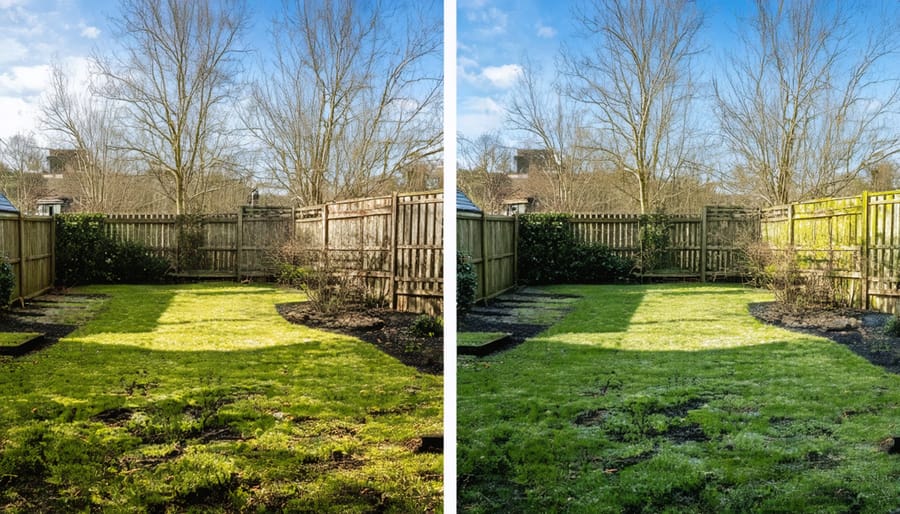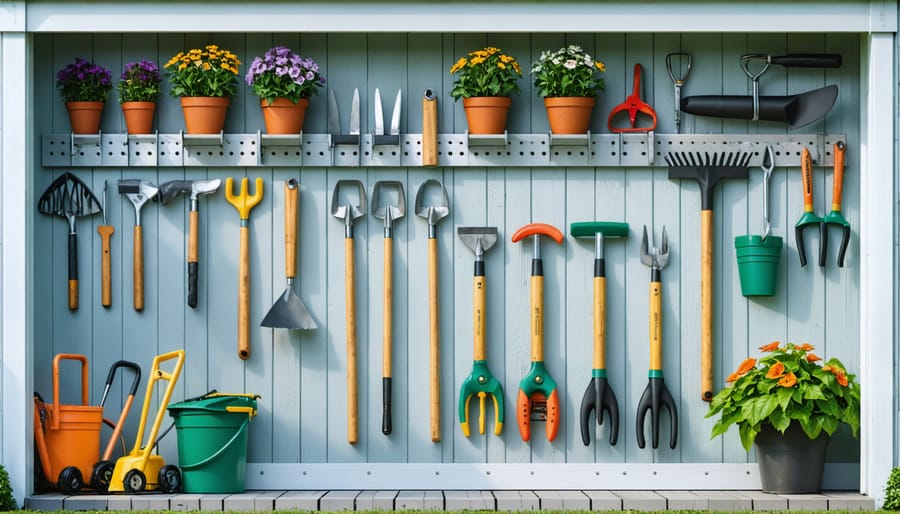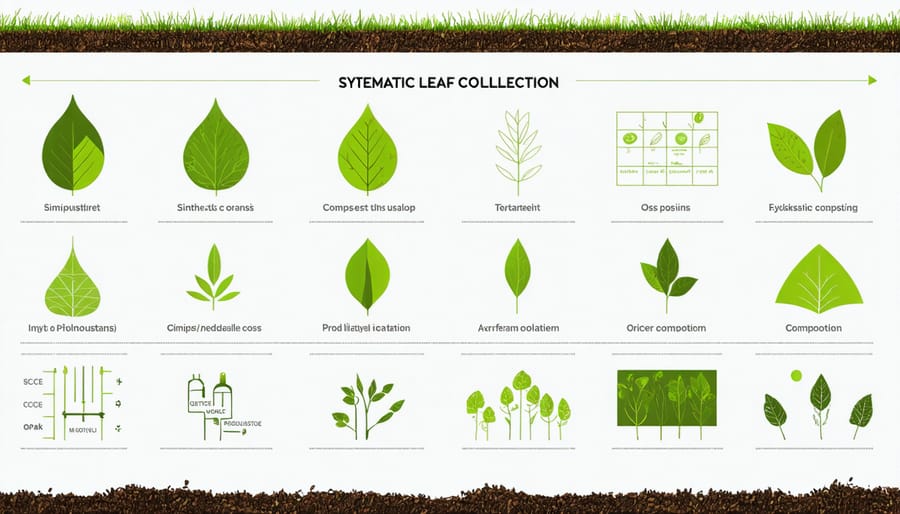Make Your Yard Sparkle: Seasonal Cleanup That Actually Works

Transform your outdoor space through strategic year-round yard maintenance that maximizes curb appeal and protects your property investment. Break down seasonal cleanup into manageable quarterly tasks, focusing on spring debris removal, summer growth management, fall leaf collection, and winter preparation. Store yard tools and equipment in weather-resistant spaces, organizing them by season and frequency of use for quick access during critical maintenance periods. Create a maintenance calendar that aligns with your local climate patterns, scheduling essential tasks like pruning, mulching, and equipment servicing during optimal weather windows. Implement a zone-based cleaning system that divides your yard into manageable sections, tackling high-visibility areas first and working systematically through your property to ensure comprehensive care without overwhelming yourself or your schedule.
Spring Cleanup: Preparing Your Yard for Growth
Post-Winter Assessment
As winter’s grip loosens, it’s crucial to assess your yard for seasonal damage and create a systematic cleanup plan. Start by walking your property on a clear day, noting areas where snow, ice, or winter storms have taken their toll. Look for broken branches, damaged shrubs, and areas where snow mold might have affected your lawn.
Create a detailed checklist that prioritizes urgent repairs and safety hazards. Common winter damage includes split tree limbs, frost-heaved pavers, damaged fencing, and compacted soil from snow piles. Document these issues with photos to track progress and help plan future winter protection strategies.
Pay special attention to drainage areas that may have become clogged with winter debris. Check gutters, downspouts, and surface drains to ensure proper water flow during spring rains. Inspect outdoor structures like garden beds and retaining walls for signs of frost damage or shifting.
Sort your cleanup tasks into manageable categories: safety concerns, structural repairs, plant care, and general cleanup. This organized approach helps ensure nothing is overlooked and makes the post-winter recovery process more efficient and less overwhelming.

Spring Cleaning Essentials
As winter retreats and temperatures rise, it’s time to tackle those essential spring cleaning tasks that set the stage for a beautiful yard throughout the growing season. Start by walking your property to assess winter damage and create a cleanup checklist.
Begin with debris removal, gathering fallen branches, dead leaves, and any remaining holiday decorations. Pay special attention to corners where wind-blown debris tends to accumulate. A sturdy rake and heavy-duty yard waste bags make this task more manageable.
Next, focus on your garden beds. Remove dead plant material, being careful not to disturb any early spring bulbs that might be emerging. Pull any weeds that have survived the winter, making sure to get the entire root system. This is also the perfect time to add a fresh layer of mulch to suppress future weed growth and retain moisture.
Early spring pruning is crucial for plant health. Remove dead, damaged, or crossing branches from trees and shrubs before new growth begins. For flowering shrubs, verify their blooming cycle first – some spring-flowering varieties should wait until after they bloom for pruning.
Don’t forget to clean and prepare your hardscaping elements. Clear debris from pathways, patios, and driveways. Check for any damage that winter might have caused to retaining walls or fencing. A pressure washer can help restore these surfaces to their original condition.
Finally, inspect and clean your garden tools. Sharp, clean tools make yard work easier and help prevent the spread of plant diseases. Consider organizing your storage space now to keep everything accessible throughout the busy growing season ahead.
Summer Maintenance: Keeping Your Yard Beautiful

Tool Organization and Storage
Keeping your yard maintenance tools organized and easily accessible is crucial for efficient seasonal cleanup. Start by learning how to organize your garden tools in a way that maximizes space and protects your investment. Install wall-mounted racks or pegboards to keep long-handled tools like rakes and shovels off the ground. Use clear, labeled bins for smaller items such as pruning shears, gloves, and garden twine.
Consider creating designated zones within your storage area: one for frequently used items, another for seasonal tools, and a separate space for power equipment. Install hooks at various heights to accommodate different tool sizes, and use magnetic strips to keep metal tools organized and easily visible.
Protect your power tools by storing them in their original cases or dedicated toolboxes. Keep chemicals and fertilizers on high shelves away from children and pets, and ensure proper ventilation. For moisture-sensitive items, consider using a dehumidifier or moisture-absorbing products.
Remember to clean tools before storage and apply a light coat of oil to prevent rust. This simple maintenance routine will extend the life of your equipment and keep everything ready for the next season’s tasks.
Regular Maintenance Schedule
Establishing a consistent maintenance schedule is key to efficient yard maintenance throughout the summer months. Start by mowing your lawn weekly, adjusting the height based on grass type and weather conditions. Set aside time every two weeks for edge trimming and weeding to prevent unwanted growth from taking over your garden beds.
Water deeply but infrequently, preferably early in the morning, to encourage strong root growth and prevent fungal issues. Check your irrigation system monthly for leaks or blockages. Inspect your plants bi-weekly for signs of pest infestations or disease, addressing any issues promptly to prevent spread.
Dedicate one weekend per month to larger maintenance tasks like pruning shrubs, refreshing mulch, and cleaning garden tools. Keep your tools organized and easily accessible in your storage shed, making regular maintenance tasks more manageable. Create a simple checklist to track completed tasks and upcoming maintenance needs.
Remember to adjust your schedule based on weather conditions and your yard’s specific needs. A well-maintained yard not only looks better but also requires less intensive cleanup when seasons change.
Fall Preparation: Getting Ready for Winter
Leaf Management Solutions
When autumn arrives, managing fallen leaves becomes a top priority for maintaining a healthy and attractive yard. The key is to develop a systematic approach that works for your property’s size and leaf volume. For small yards, a sturdy rake and collection bags might be sufficient, while larger properties may benefit from a leaf blower or vacuum system.
Consider implementing a “mulch in place” strategy by mowing over leaves repeatedly until they’re finely shredded. These tiny leaf particles naturally decompose, enriching your soil with valuable nutrients. If you prefer removal, invest in a quality tarp for easy transport – simply rake leaves onto the tarp and drag them to your collection area or compost bin.
Speaking of composting, fallen leaves are garden gold! Create a dedicated leaf mold pile by collecting damp leaves in a contained area. Within 6-12 months, you’ll have rich, crumbly leaf compost perfect for garden beds and mulching. For immediate use, shredded leaves make excellent winter protection for delicate plants and garden beds.
Don’t wait until all leaves have fallen to begin cleanup. Regular maintenance prevents leaves from becoming wet, matted, and difficult to manage. Plus, working with smaller amounts is less physically demanding. Remember to protect your lawn by avoiding leaf accumulation, which can suffocate grass and create bare patches come spring.

Plant Protection and Tool Storage
As winter approaches, protecting your valuable plants and garden tools becomes crucial for maintaining their longevity. Start by identifying frost-sensitive plants in your garden that need extra protection. Create protective barriers using burlap wraps or frost blankets around delicate shrubs and young trees. For potted plants, consider moving them to a sheltered location like a garage or greenhouse where temperatures remain more stable.
Mulching is your best friend during winter preparation. Apply a thick layer of organic mulch around the base of perennials and shrubs to insulate their roots from freeze-thaw cycles. Pine straw, bark chips, or fallen leaves work excellently as natural insulators. Remember to keep the mulch a few inches away from plant stems to prevent rot.
When it comes to tool storage, proper cleaning and organization are essential. Begin by thoroughly cleaning all garden tools with soap and water, removing any dirt or plant debris. For metal tools, apply a light coat of mineral oil to prevent rust during storage. Wooden handles benefit from a quick rub-down with linseed oil to prevent drying and cracking.
Create designated storage spaces for different types of tools. Wall-mounted tool racks or pegboards keep items organized and easily accessible. For power equipment like lawn mowers and trimmers, drain the fuel tanks or add a fuel stabilizer before storage. Store batteries for cordless tools in a cool, dry place, and ensure they’re partially charged to maintain battery life.
Consider implementing a simple labeling system for your storage area. This helps track tool maintenance schedules and ensures everything returns to its proper place. Small tools like pruners and trowels can be stored in weather-resistant bins or toolboxes to keep them organized and protected from moisture.
Don’t forget to store garden hoses and irrigation equipment. Drain all water to prevent freezing damage, coil hoses neatly, and store them in a sheltered location. Taking these steps now will ensure your plants survive winter and your tools are ready for action when spring arrives.
Winter Organization: Smart Storage Solutions
Protected Storage Options
Protecting your yard equipment during the off-season is crucial for extending its lifespan and ensuring it’s ready when you need it. Let’s explore some effective winter storage solutions that can help safeguard your investment.
A well-built storage shed serves as your primary defense against the elements. Consider a weather-resistant model with proper ventilation to prevent moisture buildup. Position your shed on level ground, preferably on a concrete pad or gravel base, to ensure stability and prevent water damage from ground contact.
For those with limited outdoor space, vertical storage solutions can maximize your available area. Install wall-mounted tool racks and overhead storage systems to keep equipment organized and off the ground. Use hooks and pegboards for smaller tools, and consider adding adjustable shelving for flexibility as your storage needs change.
Climate control is essential for protecting sensitive equipment. While a fully climate-controlled shed might not be necessary, basic insulation and weatherstripping can help regulate temperature and humidity levels. Add a dehumidifier during particularly damp seasons to prevent rust and mildew.
Before storing power equipment, perform basic maintenance: drain fuel tanks, clean filters, and apply protective coatings to metal surfaces. Store batteries separately in a temperature-controlled environment, and elevate items like lawnmowers on platforms to prevent tire damage.
For seasonal decorations and less frequently used items, consider weatherproof storage containers with secure lids. Label everything clearly and create an inventory system to track what’s stored where. This organization will save time when you need to locate specific items throughout the year.
Remember to maintain clear pathways to frequently accessed items, and consider installing motion-sensor lighting for safety and convenience during darker months. A well-organized storage space not only protects your equipment but also makes seasonal transitions smoother and more efficient.
Regular seasonal yard cleanup isn’t just about maintaining appearances – it’s an investment in your property’s long-term health and value. By following a consistent maintenance schedule throughout the year, you’ll prevent costly problems, create a safer outdoor environment, and enhance your home’s curb appeal. Remember that proper tool storage and organization are key components of successful yard maintenance, making each season’s tasks more manageable and efficient. Whether it’s spring preparation, summer upkeep, fall cleanup, or winter readiness, staying on top of seasonal yard work helps create a beautiful, well-maintained outdoor space that you can enjoy year-round. Make seasonal maintenance a priority, and you’ll reap the rewards of a healthier, more beautiful yard while protecting your outdoor investments for years to come.

